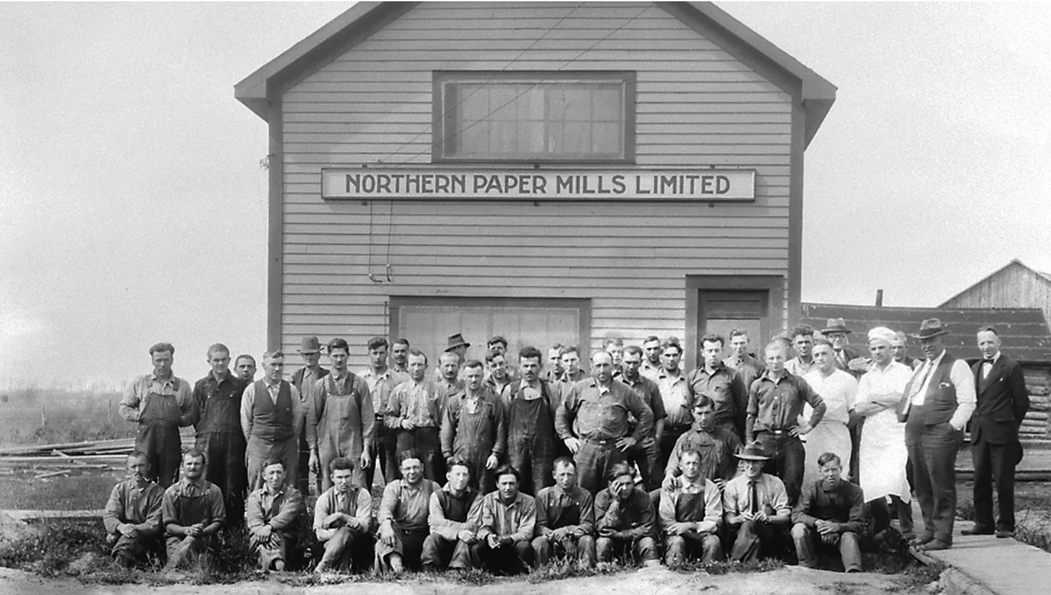The Historic Day Street Paper Mill Will Close Friday in Wisconsin
Share

First opened in 1901, the mill is the birthplace of Quilted Northern toilet paper and provided union employment to Green Bay families for generations.
It’s the end of an era in Green Bay, Wisconsin.
No, we aren’t talking about what’s happening over at quarterback on the city’s football team. An even older Green Bay institution is set to say farewell on Friday, when the Day Street Paper Mill closes its doors after 122 years in business.
The factory is truly historic, having opened in 1901 to make paper products. By 1902 it was making the toilet paper that spawned brands like Northern Tissue and Quilted Northern. The factory also manufactured well-known brands like Brawny and Sparkle paper towels and Dixie napkins.
The factory also played a big role in the Arsenal of Democracy during World War II, making “dyes for large aerial bomb noses, spring suspension brackets used on tanks, parts for guns and valves and steering mechanism parts for submarines,” according to the Green Bay Post Gazette.
Like many legacy American factories, the Day Street Paper Mill underwent several ownership changes throughout the decades. Georgia-Pacific bought the plant in 2005, and made the decision to close the mill in 2022, citing the factory’s aging infrastructure and equipment. Operations are expected to shift to nearby Georgia Pacific facilities.
Our Jeff Bonior wrote about the impending mill closure shortly after it was announced last year. There was optimism that employees would be able to quickly find new work, as Green Bay is home to several additional paper mills.
As Bonior noted, paper “is an $18 billion industry in Wisconsin, employing more than 30,000 workers at 34 mills, plus another 204 facilities that convert paper into other products.” Bonior continued:
Keith McKeefry is the USW Local 2-00213 president and has worked at the Day Street mill since 1983 when the facility had more than 1,200 employees. He was instrumental in negotiating the final contract at the mill, which provides bonuses of anywhere from $2,000 to $5,000 to workers that stay on the job at Day Street until the final shutdown.
With the competition for labor at a premium in the Green Bay area, Georgia-Pacific has had to make sure it could maintain a workforce to take the plant through its closing days. Approximately 20% of its workforce left Day Street to work at competing mills not long after the impending closure was announced.
“Proctor & Gamble, which makes Charmin and is our competitor, is right next to us and is the only one in the Proctor & Gamble family that is union,” said McKeefry. “Green Bay Packaging, which just opened up a brand-new plant on the other side of Proctor & Gamble, is also a USW-represented plant. That’s where most of our maintenance mechanic people are going because they still are on double time on Sunday. We haven’t had double time on Sunday at Day Street for probably 15 years.
“The 50 people that didn’t transfer to the Broadway plant are probably going to be at a union plant right next door or just down the street. Old guys like me, we’re going out the door and we’re going to be retiring. And there are other people in that age group of 55 and older that are going to be able to retire and still collect their pension and get another job at a union plant with a separate pension program. It’s probably the best of both worlds for what is going on.”
You can read Bonior’s full story here.
While employees were largely optimistic about their future job prospects, there was a bit of reflection in Green Bay about the closure.
Employees at the facility were a tight-knit group, working together during holidays, celebrating at family picnics, and even hitting the picket line together during a major strike in the 1980s. But the mill also meant a lot to the community, with employees supporting local businesses and volunteering for organizations like United Way and Habitat for Humanity.
Karen Rusch, who is headed to work at Georgia-Pacific’s nearby Broadway Mill, told the Post Gazette that she thinks of the mill like a puzzle.
“Everybody was a piece,” she said, “and without all of us together, you wouldn’t have what we had.”
